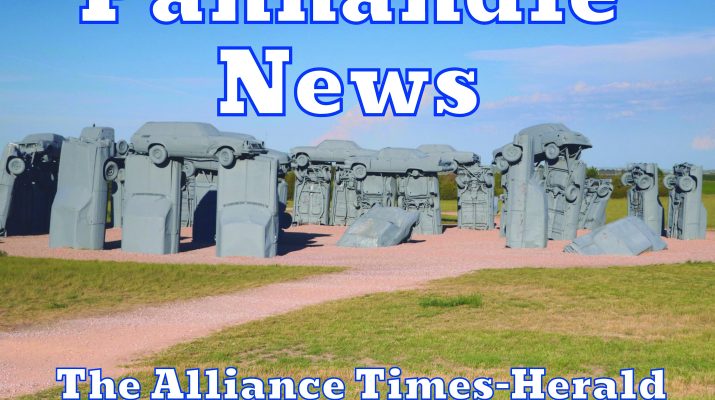CHADRON – Dr. Mathew Brust, Chadron State College Professor of Life Sciences, returned to south-central Wyoming this summer in hopes of capturing additional specimens to confirm what he suspected was his discovery of a new species of bumblebee scarab beetle in July 2022.
On July 10, in the late afternoon, he drove about 27 miles northeast of Rawlins to the Ferris Dunes, the site of his initial discovery in 2022. The temperature was in the mid-80s, but the beetle he was seeking was not flying.
Brust said he spent the night in Rawlins and wondered if he was too early in the season. He questioned if he had gone the wrong time of day or if wind was a factor. He had only collected four beetles the year before but was confident he could find them again since he remembered seeing between eight and 40.
The next morning, he drove to the Seminoe Dunes about 15 miles southeast of the Ferris Dunes bolstered by the knowledge that the habitat was similar to the Ferris Dunes. Additionally, last year he had seen a photo of what seemed to be the same insect taken at the Seminoe Dunes and posted on the iNaturalist app.
Last year, he had seen the beetle among sparse grass areas in the morning, so he returned to the same type of habitat at the same time of day. He arrived about 8:15 a.m. and hiked for 15 minutes to his favorite dune top, which faces slightly east, an added bonus since he knew it would be first to warm up. Not much happened for about 15 minutes.
“But, from about 8:35 to 10 a.m. was madness. The beetles start showing up all over. Initially, they were like clumsy bumble bees. First one, then a second within two to three minutes. Then another within a minute. And then three or so in a minute. Soon, I was seeing anywhere from two to 10 flying at any given time,” Brust said.
Brust covered about 10 acres while collecting a large series of specimens and photographed more. In August, he sent the new series from the Seminoe Dunes to the Nebraska State Museum in Lincoln where Dr. Matt Paulsen will collaborate with other experts to develop and publish the species description. Paulsen already has Brust’s Ferris Dunes specimens from 2022. The series of specimens is necessary for the species to be formally described, Brust said.
The official description process involves many measurements and similar data gathering, likely various detailed drawings, followed by the writing of a manuscript that will be submitted to a suitable scientific journal for potential publication, according to Brust.

